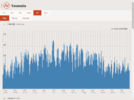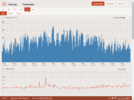In a paper from June 2021, the experts conclude that “there is at best a tiny market for the sort of service that [Kurri Kurri power station] can offer and so it has no prospect of earning anywhere near the revenues needed to recover its outlay”.What has that got to do with whether the gas turbines are required?
This is due to the relatively small demand for gas peaking power as well as the presence of the Colongra gas peaking plant 50 kilometres from Kurri Kurri. Colongra was bought by Snowy Hydro for $234 million in 2015 and is almost identical to Kurri Kurri and already provides much the same service that Kurri Kurri is supposed to.
Maybe just read it









